Press release
30 June 2023
Déjà-vu on the Oder – ensuring water quality on rivers
Will there be more environmental disasters like the one on the Oder in summer 2022? And how can they be foreseen or avoided in the future? To do this, EOMAP continuously analyzes the river catchment using satellite data. Critical developments in rivers can be identified at an early stage and discharges can be adjusted at the click of a mouse. But up to now, only a few authorities use the online solution.
Since the fish die-off in the Oder in August 2022, EOMAP has been continuously analyzing the water quality, from Poland to the estuary in Germany. Because satellite data can be used to show at an early stage, whether such a harmful algal bloom will develop again. To do this, the data analysts compare the following drivers for algae growth from last summer with this summer over the course of the river: water level and discharge, solar radiation and surface temperature, as well as the algae pigment chlorophyll-a.
“All in all, we see that in 2023 a similar development is emerging at certain points on the Oder,” reports Dr. Thomas Heege, Managing Director of EOMAP.
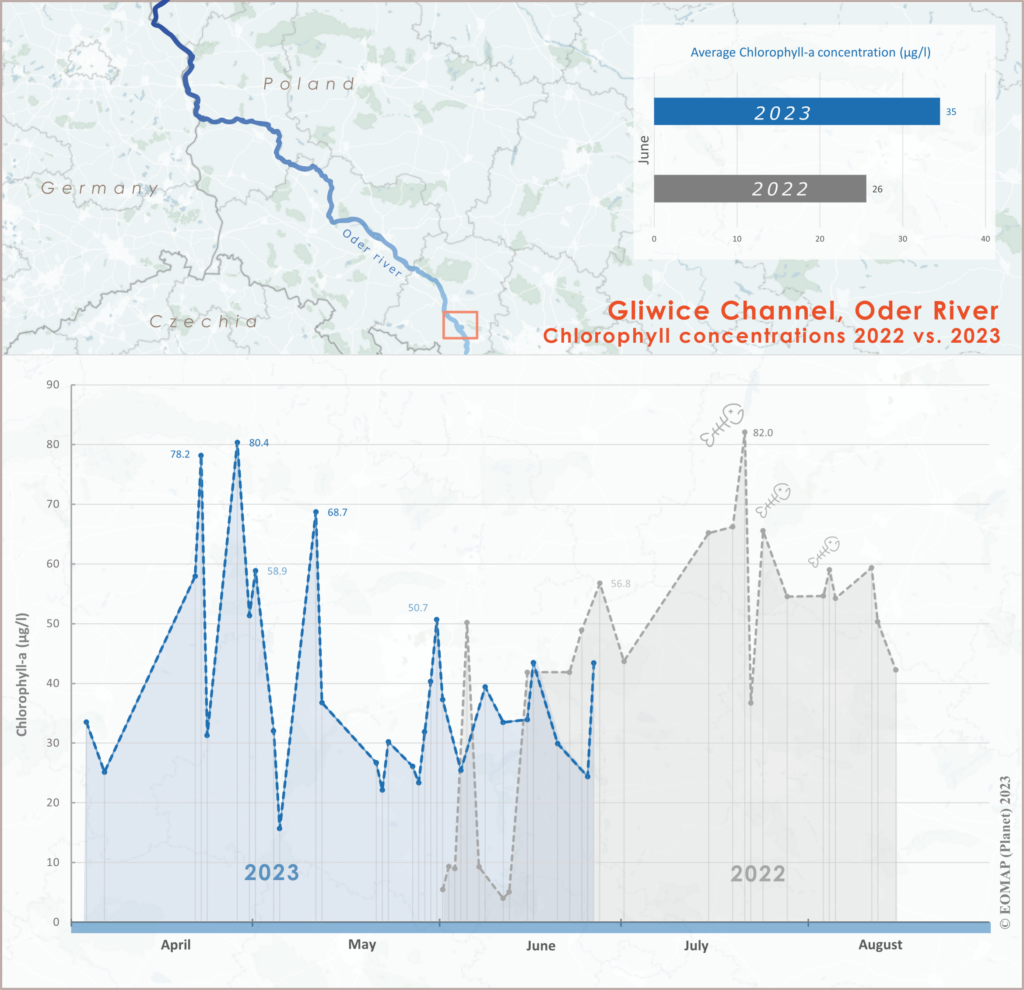
In May 2023, Chlorophyll-a on the Oder near Gliwice already reached similar peaks to those in summer 2022 (at the time of the fish die-off).
In April and May 2023, for example, the Gliwice Canal already had chlorophyll values in the highest range of the previous year, and the Czernica reservoir northwest of Ratovice showed a clearly visible algae bloom (over 100 µg/l) at the end of May. This was preceded by days of increased solar radiation. At the beginning of June, the water level in the central Oder area (river km 300 – 400) was higher than in July 2022. However, very low discharge values were measured at the same time in the south (river km 220) and on the German side in the north. Comparable to the course in summer 2022, the discharge on the German side and south of Wroclaw also decreased. On the Polish side, from the beginning of May until mid-June, the water flow was comparable to that in 2022. The rise in temperature of the water surface in the Gliwice Canal was also clearly visible in the course of May 2023.
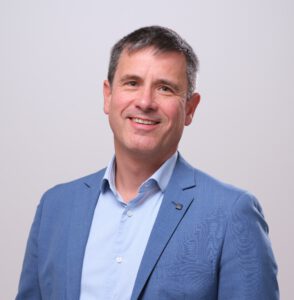
Dr. Thomas Heege – Managing Director of EOMAP
“Now things have calmed down a bit. But with the current increase in solar radiation and rising temperatures, this mix could again lead to strong algae growth and toxic conditions,” says Heege.
With EOMAP, all hydrological and water-biological data flow into an online solution for a reliable overview with just a few mouse clicks. If you set threshold values for critical parameters on this “eoApp”, the data mix becomes an early warning system. This means that unfavorable conditions, for example for strong algae growth, can be identified at an early stage. Authorities could, for example, pinpoint where and when saline industrial waste water should be avoided in order to prevent the growth of toxic golden algae. Environment Minister Lemke called for the latter at the Oder Conference on June 6th. The “eoApp” is not only suitable for rivers, but also for lakes.
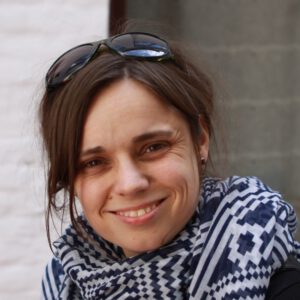
Karin Schenk – Head of Water Quality EOMAP
“Many international, but only a few German authorities have recognized the potential and are using satellite data to keep an eye on bodies of water. But we think that there will soon be more,” hopes Karin Schenk, Head of Water Quality at EOMAP.
For its comparisons, the Bavarian medium-sized company, which emerged from DLR in 2006, uses European Sentinel data from ESA and mostly high-resolution PlanetScope data, which are supplied by Planet’s Dove satellites. For the investigations on the Oder, EOMAP also works closely with the “Water Resources and Environment” department at the Helmholtz Center for Environmental Research (UFZ).
In contrast to on-site water samples, satellite data allow a synoptic view of the entire course of the river. They also trace critical developments long after the water has drained away. Thanks to the high spatial and temporal resolution – like that of Planet’s satellite data – smaller tributaries and reservoirs can also be analyzed.
About EOMAP
The team of 50 Geodata experts is headquartered near Munich, Germany. Since 2006, EOMAP has been specializing on satellite-based environmental data and IT solutions for aquatic environments. In 2022, the company was awarded the ESA Copernicus Tech Award as well as the Bavarian Innovation Prize. With their work, the team wishes to contribute to a better understanding and a more sustainable management of waters around the world.
Our partner in this project, Planet has published an interesting Blog post on the early warning system here.
Here is the link to download the following items:
- satellite image,
- graphic,
- Screenshot of the dashboard
- portraits of Thomas Heege and Karin Schenk.
Please respect the copyright “eomap.com” andthe captions as indicated on this page.
Kontakt:
Andrea Schmölzer, Email: schmoelzer@eomap.de , Tel: +49 176 11 773 773
Link to the Press room of EOMAP.
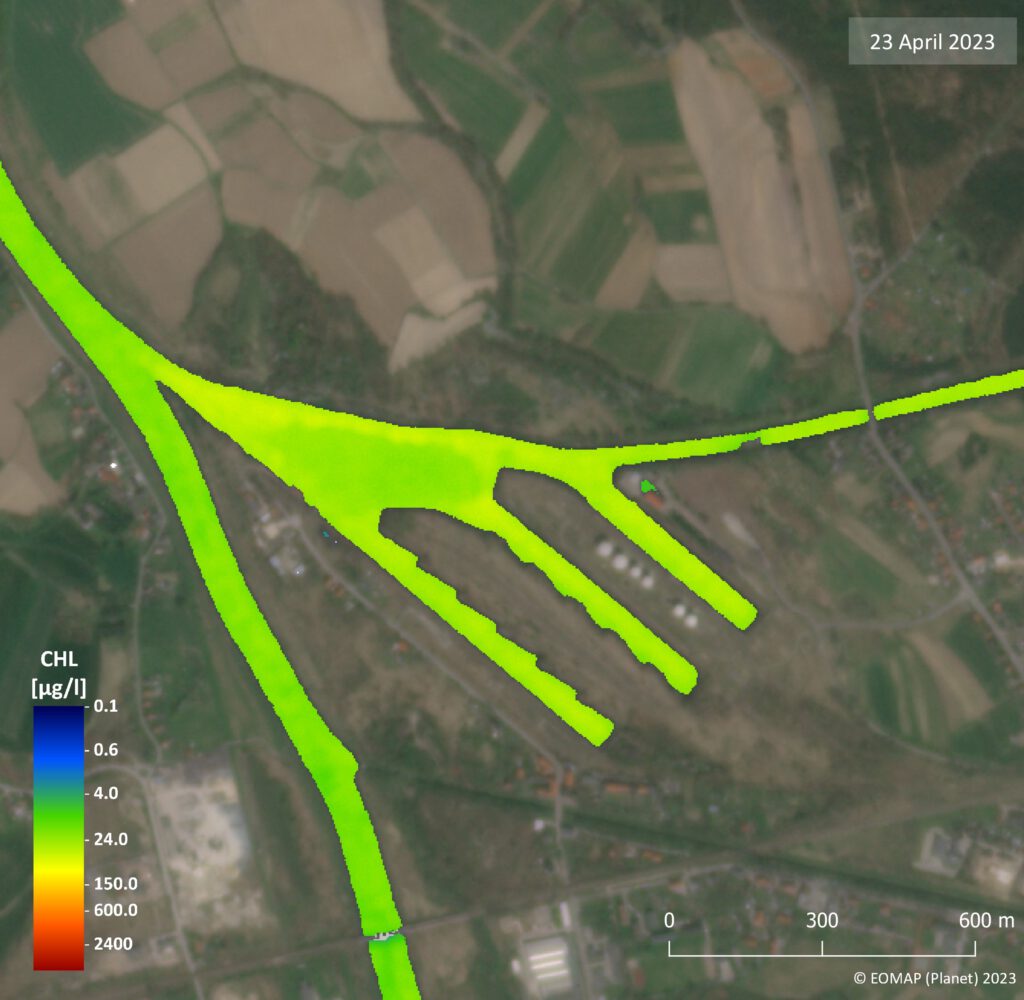
The image shows the inflow of the Gliwice Canal into the Oder river. On 23 April 2023, the canal showed double the chlorophyll-a concentration of the river. However, due to its small volume, this difference had low impact on the river. High resolution satellite data by Planet make the differences in concentration visible in detail.
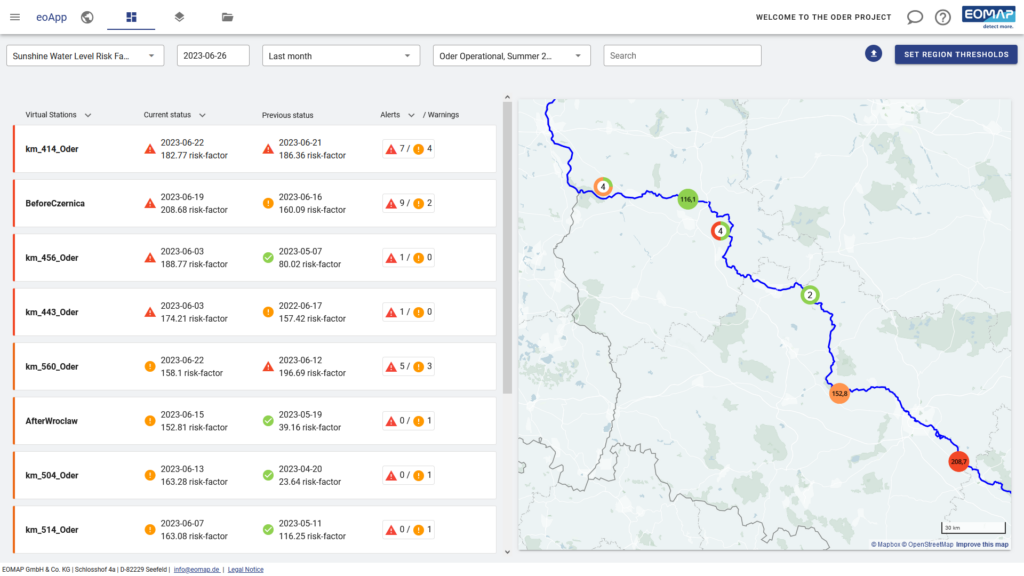
The dashboard of EOMAP’s eoApp shows the situation as of 26 June 2023, for the past four weeks. It reveals the high risk situation south of Wroclaw (PL) during May. In the course of June, the situation calmed down, mostly due to more rainfall and cloudy weather.